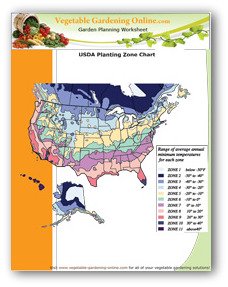Growing Potatoes in Your Backyard and Beyond
Use our easy tips for growing potatoes in containers, tires, or straw.
Use our planting chart for when and how to grow potato plants in the ground.
Planting potatoes in containers, tires, straw or pots is a fun and amazing project for backyard gardeners.
This method of cultivating potatoes is ideal for beginner gardeners or those with small amount of space for a vegetable garden!
Design Your Own Vegetable Garden Layout Using our Free "Vegetable Garden Planner" Software!
Growing vegetables at home is fun and a great way to save money.
Who would think that you could grow potatoes in a container garden, in straw or an old tire?
Well, it is not only easy, but has several advantages over raising potatoes in the ground.
Download Free Garden Planning Worksheets, Garden Diary, Zone Chart, Or Planting Guide
Potato Plant Facts
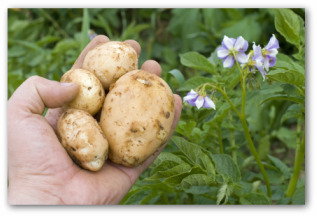 Freshly Dug Potatoes from the Garden
Freshly Dug Potatoes from the GardenSome facts on growing potatoes: These are actually tubers, not roots.
With more than 100 potato varieties from white to red, it is the fourth largest food crop in the world that is cultivated in such diverse countries as China and Ireland.
When to Plant Potatoes
Download our vegetable garden planting guide.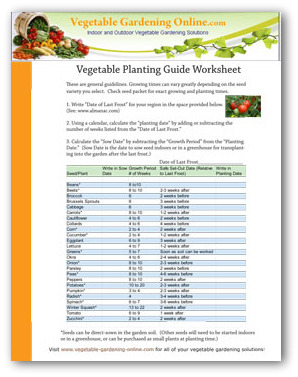
Depending on the area where you plan to grow potatoes in pots, you can start preparations in late January or early February (mild areas) or late February and early March (moderate areas), or April/May in cooler climate zones, when soil temperature at 60°-70°F for optimal yields.
Potato plants are sensitive to frost.
- You’ll want to ensure that your potato tubers have ample protection against the cold, preferably through frost blankets or if in containers, by moving them to a warmer location during the night.
- You can then remove
the frost blankets, or move the pots back in the mornings to allow the
plants to breathe.
- Potato plants grow very quickly once the weather has warmed a bit. Sometimes it seems that you can almost see them growing!
Growing Potatoes in Containers
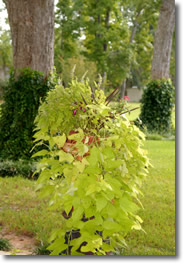 Sweet Potato Growing in Pot
Sweet Potato Growing in PotWhen you are considering growing potatoes in pots, you only need small spaces to store the container.
You can use a sunny location on the patio, porch, balcony or a flower bed for your potato container, although steps must be taken to ensure that your plants will not be damaged by frost.
Your pots can be as small as 12 inches across the mouth and 12 inches deep, all the way to a full size plastic garbage can, with drainage holes at the bottom.
Whatever size container you choose, the procedure is the same:
- Place 8-12 inches of potting soil in the bottom of the container.
- Lay the seed potatoes on the soil, and cover them with 3 inches of soil or straw.
- When
the potato plant starts to grow, continue adding potting soil or straw
half-way up the plant stem until the soil reaches the top of the
container. (Be careful not to cover all of the plant foliage at one
time; you don't want to bury it alive!)
- The growing
potato plant will continue putting out side roots as it grows all the
way to the top of the container.
- The side roots will produce more and more potatoes as it grows to the top of the container.
Planting Potatoes in Straw or Old Tires
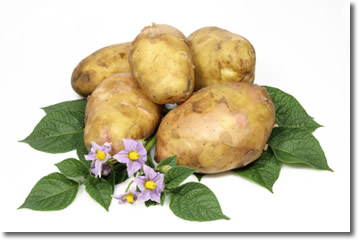
Many gardeners prefer growing potatoes in straw on top of the ground or inside an old tire.
- Start by placing the seed potatoes on top of the ground, (the old tire is optional!)and cover them with a thin layer of straw.
- After
the potato plants start to grow through the straw, keep layering straw
on the plants as they grow taller, covering the plants about half-way up
as they continue to grow.
- Do this 3 or 4 times, and eventually you will have a mound of straw with potato foliage showing on the top.
- The benefit of this method is that harvest is very easy; simply reach into the straw and remove your potatoes, or remove the layers of straw and pick up your potatoes.
- Another benefit is that potato
plants grow faster when they are warm. The straw keeps the plants about
10 degrees warmer than the soil in the ground.
- There is no digging in the hard dirt and possibly cutting your best potatoes in half in the process!
How to Tell When Your Potato Plants are Ready
When your potato plant reaches maturity, it will start to turn brown and look like it is dying.
When the plant has turned mostly brown, it is time to stop watering for the final two weeks before harvest.
To harvest the potatoes, simply turn your container over, and gently pour the contents on the ground.
It is easy to pick up your potatoes without the risk of damaging them that occurs when digging potatoes from a traditional in-ground garden.
At the end of each season when growing potatoes, it is recommended that the pots be disinfected with a bleach-water mixture (1:10 is ideal) to kill leftover bacteria and viruses.
Potatoes do not need especially rich soil, so regular potting soil will work just fine.
How to Grow Potatoes Using Seed Potatoes
Click Here for 20X40 Sample Vegetable Garden Plan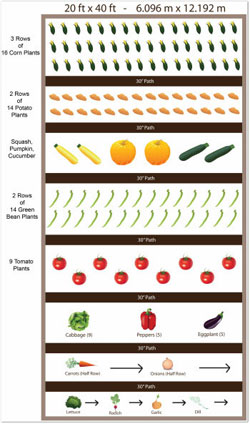
It is also recommended that fresh seed potatoes are planted each year.
You can purchase seed potatoes at nurseries, which ensure that they are completely virus, disease, and pest-free.
Potatoes bought at the grocery store have been sprayed with anti-sprouting agents, and won't work for planting. (Why do mine always sprout in the cupboard anyway?)
When planting potatoes, I buy the smallest seed potatoes available, so that I don't need to cut them into sections, or allow the sections to dry.
I just plant small whole seed potatoes in the bottom of my container.
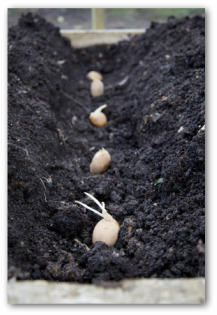 Seed Potatoes Being Planted in Compost
Seed Potatoes Being Planted in CompostChitting Seed Potatoes
Another way that is slightly more complicated is once you have your seed potatoes, allow them to undergo a process called chitting.
Just place them in seedling trays with the “eyes” facing the light and put the trays in frost-free rooms with plenty of filtered lights.
You will notice that the “eyes” will pop out after two weeks, at which time you can plant them.
When planting potatoes in soil, it is important to push the tubers about two inches into the soil, five tubers per hill or per pot.
Keep Potato Plants Well-Watered
During hot weather, you may need to water your potato plants every day.
- Especially while the plants are blooming, it is important that they be well-watered.
- Watering is not as crucial once the plants have begun to dry before
harvesting.
- You will find many varieties of seed potatoes at your local garden center. You might try growing several varieties to see which one your family likes best!
You Might Also like to Read:

